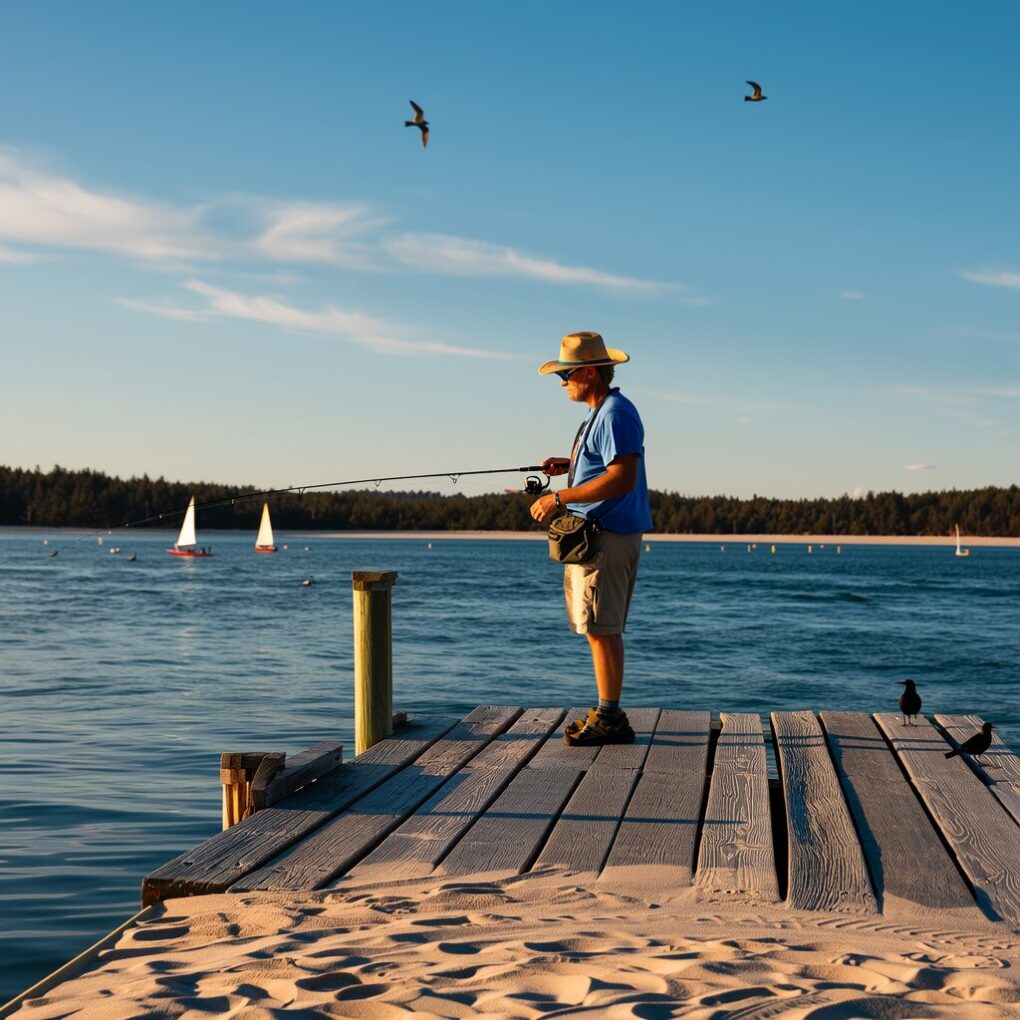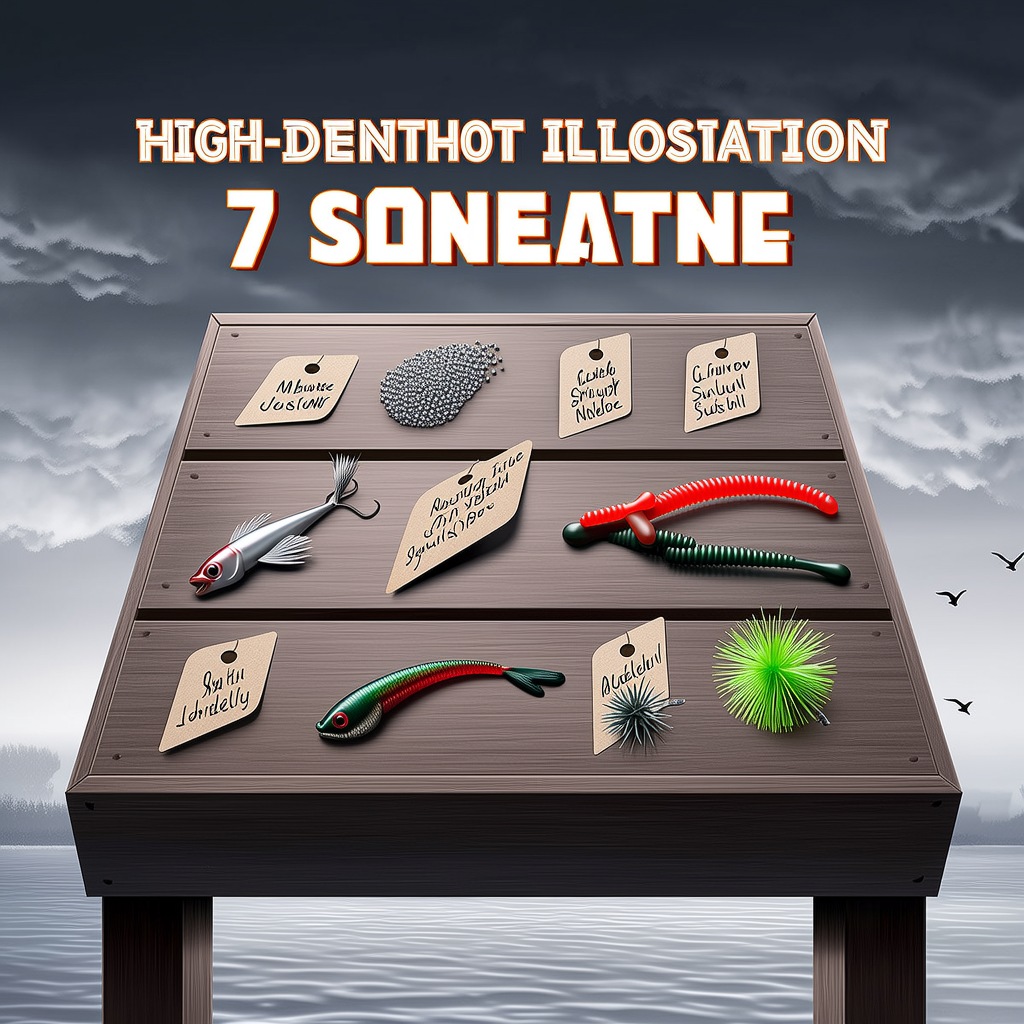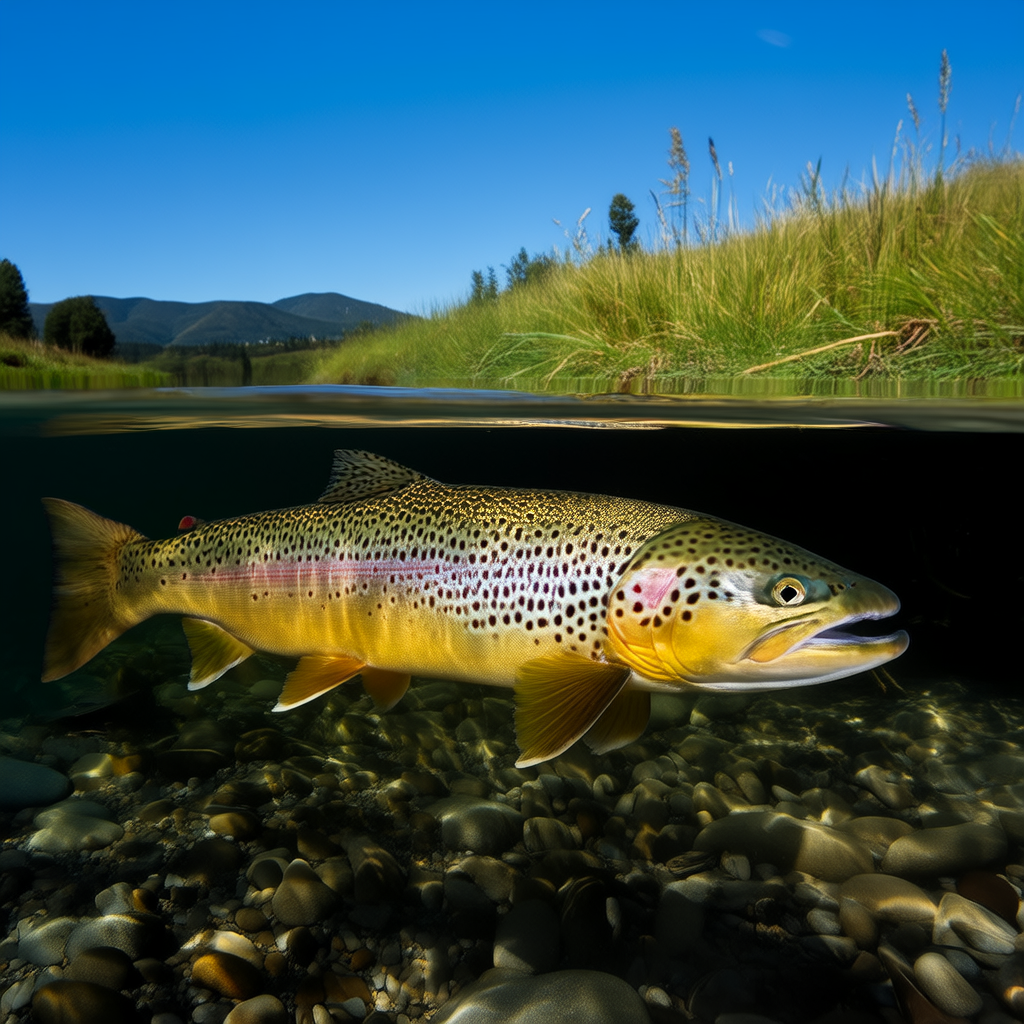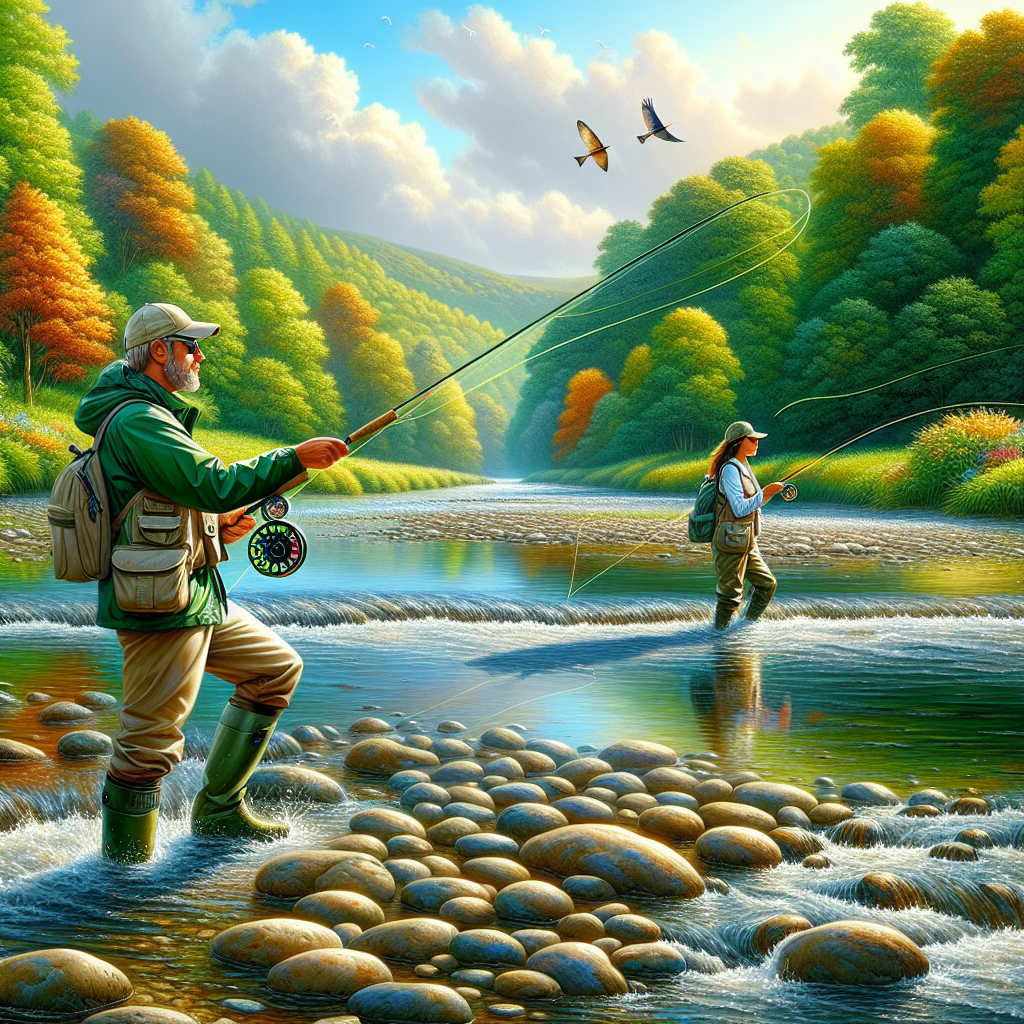Saltwater Fishing in Virginia: Unleashing the Adventure Along the Coastline
Embarking on a journey into the realm of saltwater fishing in Virginia opens up a world of excitement and opportunity. The state’s extensive coastline offers anglers an unparalleled chance to engage with diverse marine life, from striped bass to bluefish, all while enjoying breathtaking views. This guide will explore various aspects of this captivating activity, providing insights into the best locations, techniques, and essential tips for a rewarding experience.
Understanding the Virginia Saltwater Fishing Landscape
Virginia’s Coastal Geography
The Commonwealth of Virginia boasts over 112 miles of Atlantic coastline, including the iconic Chesapeake Bay, which serves as a haven for both novice and seasoned anglers alike. The convergence of freshwater rivers and salty ocean waters creates a unique ecosystem teeming with life, making it one of the most sought-after destinations for saltwater fishing in Virginia.
Biodiversity Hotspots
This region is home to an impressive array of species, each presenting its own set of challenges and rewards. From the elusive flounder to the robust red drum, every cast has the potential to bring something new and exciting. Understanding the biodiversity of these areas can significantly enhance your chances of success.
Seasonal Variations and Their Impact
Seasonality plays a crucial role in determining what kind of fish you might catch during your excursions. Springtime sees the migration of many species back into warmer waters, offering some of the best opportunities for large catches. Summer months are ideal for targeting species that prefer higher temperatures, whereas autumn brings cooler weather and different species altogether.
Finding Your Perfect Spot: Top Locations for Saltwater Fishing in Virginia
Chesapeake Bay – A Fisherman’s Paradise
No discussion about saltwater fishing in Virginia would be complete without mentioning the Chesapeake Bay. Known as the largest estuary in the United States, it provides countless opportunities for anglers year-round. Its vast expanse ensures there’s always room for everyone, whether casting from shore or venturing out by boat.
Ocean View Fishing Pier – Accessibility Meets Adventure
For those who prefer not to venture too far offshore, Ocean View Fishing Pier stands as a testament to convenience combined with adventure. Standing at over 1,500 feet long, this pier allows access to deep waters where numerous species reside, ensuring a memorable day spent reeling in trophies.
Back Bay National Wildlife Refuge – Nature’s Playground
Located near Virginia Beach, Back Bay National Wildlife Refuge combines conservation efforts with recreational activities like fishing. Here, amidst picturesque landscapes, anglers can expect encounters with spotted seatrout, croaker, and even sharks under certain conditions.
Mastering Techniques: Enhancing Your Saltwater Fishing Experience
Trolling – Expanding Your Reach
Trolling involves dragging baited lines behind a moving vessel, covering more ground compared to stationary methods. In Virginia waters, trolling proves particularly effective when targeting migratory species such as tuna or mahi-mahi, allowing anglers to cover larger areas efficiently.
Bottom Fishing – Patience Rewarded
At times, patience pays off literally through bottom fishing. By dropping weighted rigs down to the seafloor, anglers aim to attract species dwelling closer to the substrate. Black sea bass, tautog, and other bottom-dwelling creatures often fall prey to well-placed baits using this method.
Topwater Lures – Action-Packed Excitement
Using topwater lures adds an element of thrill to any fishing trip. These artificial baits float on the surface, mimicking injured prey, enticing predatory fish to strike aggressively. Striped bass and bluefish frequently respond enthusiastically to such presentations, creating unforgettable moments for anglers.
Jigging – Versatility Defined
Jigging represents another versatile technique suitable for varying depths and target species. Vertical jigging involves rapidly lifting and lowering specialized jigs, simulating erratic movements that trigger strikes. Horizontal jigging, conversely, entails swimming jigs parallel to the bottom, appealing to different types of predators.
Gear Up: Essential Equipment for Successful Saltwater Fishing in Virginia
Rods and Reels – Choosing Wisely
Selecting appropriate rods and reels forms the foundation of successful fishing endeavors. For saltwater fishing in Virginia, consider medium-heavy action spinning outfits capable of handling larger gamefish. Braided line offers superior strength and sensitivity, proving invaluable when battling powerful adversaries.
Baits and Lures – Matching the Hatch
Bait selection heavily influences outcomes; live bait remains king for attracting wary specimens. Menhaden, squid, and cut bait serve as staples in Virginia waters. Artificial options include soft plastics, hard plugs, and metal spoons, catering to specific scenarios depending on targeted species and environmental factors.
Terminal Tackle – Fine-Tuning Success
Proper terminal tackle setup enhances presentation and increases hookup rates. Swivels prevent line twist, while circle hooks improve release survival rates. Leaders made from fluorocarbon material remain nearly invisible underwater, boosting confidence among cautious fish.
Safety First: Preparing for Safe Adventures
Weather Awareness – Staying Informed
Prioritizing safety begins with staying informed about current weather patterns. Sudden storms or drastic changes in sea conditions pose significant risks if unprepared. Checking forecasts before heading out ensures peace of mind and minimizes potential hazards.
Boat Maintenance – Reliability Matters
Regular maintenance keeps boats reliable and operational. Inspect engines, electrical systems, and safety equipment regularly to avoid unexpected breakdowns mid-trip. Equipping vessels with life jackets, fire extinguishers, and signaling devices further promotes secure journeys.
Fishing Etiquette – Respecting Shared Spaces
Respecting fellow anglers contributes to harmonious experiences shared across Virginia’s waterways. Maintain proper distances between boats, adhere to local regulations, and practice catch-and-release whenever possible to preserve resources for future generations.
Educational Opportunities: Learning Beyond the Basics
Local Guides and Charters – Knowledgeable Assistance
Hiring experienced guides or joining charter trips presents excellent ways to learn advanced techniques directly from professionals familiar with regional nuances. Their expertise proves invaluable, especially for beginners seeking guidance tailored specifically towards saltwater fishing in Virginia.
Workshops and Seminars – Expanding Horizons
Attending workshops hosted by local organizations introduces participants to cutting-edge strategies and emerging trends within the sport. Networking opportunities also arise, connecting enthusiasts with likeminded individuals eager to share knowledge.
Online Resources – Information at Your Fingertips
Leveraging online platforms delivers instant access to articles, videos, and forums discussing all facets related to saltwater fishing in Virginia. Engaging digitally fosters continuous learning beyond traditional classroom settings.
Conservation Efforts: Preserving Our Natural Heritage
Regulations and Compliance – Doing Your Part
Adhering to established rules protects ecosystems vital to sustaining healthy fish populations. Familiarize yourself with size limits, bag limits, and closed seasons applicable to targeted species to ensure compliance and contribute positively toward conservation goals.
Tagging Programs – Scientific Contributions
Participating in tagging programs aids researchers studying migration patterns, growth rates, and population dynamics. Tagged fish retrieved later provide valuable data helping manage fisheries sustainably.
Habitat Restoration – Building Better Futures
Supporting habitat restoration projects strengthens breeding grounds and feeding areas critical to maintaining balanced ecosystems. Initiatives restoring oyster reefs or seagrass beds exemplify collaborative efforts benefiting wildlife and humans alike.
Conclusion: Embracing the Spirit of Saltwater Fishing in Virginia
In summary, saltwater fishing in Virginia encapsulates much more than merely catching fish. It embodies exploration, education, camaraderie, and stewardship, forming bonds between people and nature. Whether casting lines alone or alongside friends and family, embracing these principles enriches experiences while safeguarding cherished resources for tomorrow’s adventurers.
So pack your gear, review the guidelines presented here, and prepare to immerse yourself fully in the wonders awaiting just offshore. With dedication, respect, and passion guiding your path, every outing becomes part of an ongoing legacy celebrating life beneath the waves.




